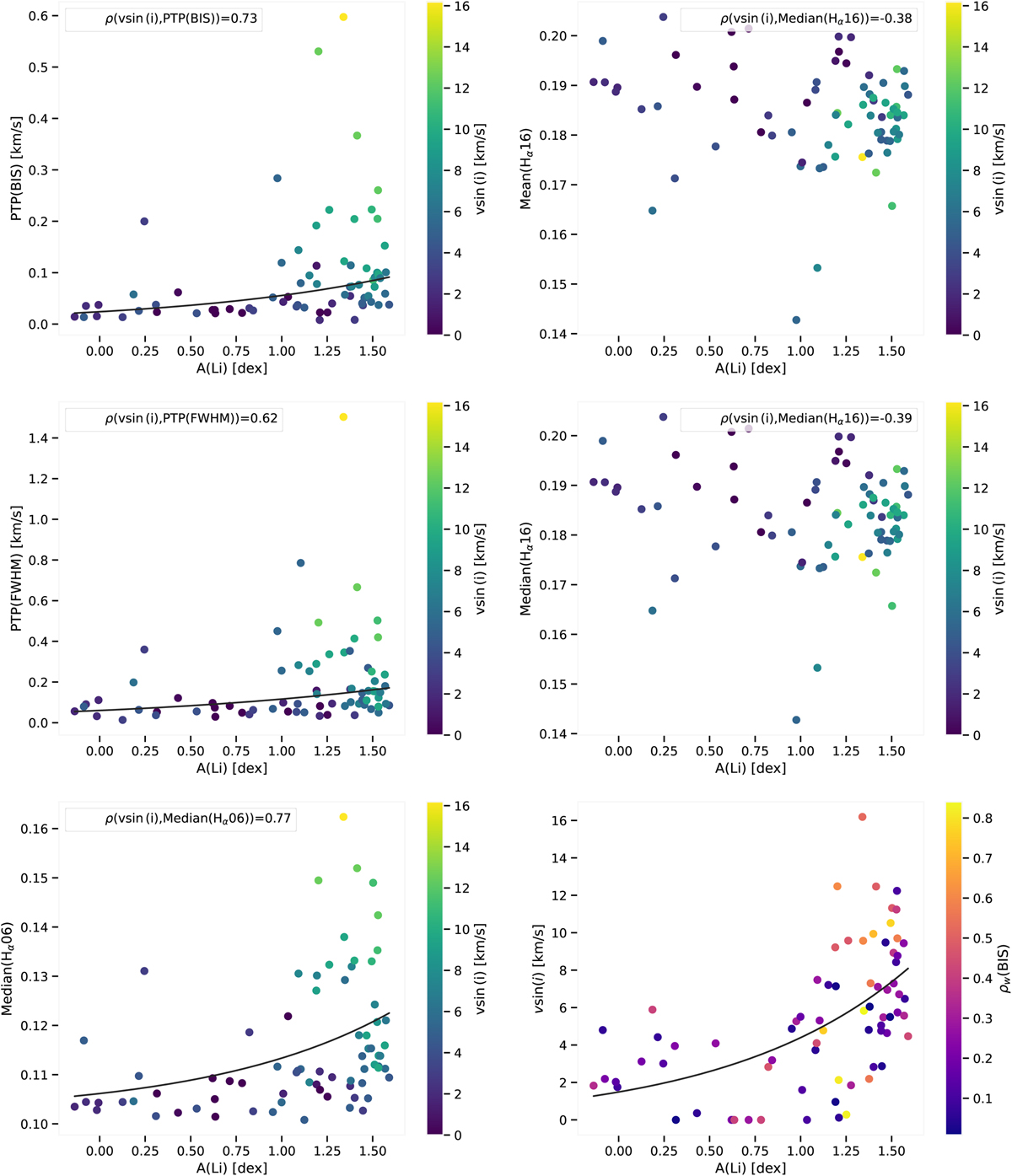Fig. D.1

Download original image
Left: Exponential relation found between the PTP of BIS data for each star and A(Li) [top panel]; the PTP of FWHM data for each star and A(Li) [middle panel]; the median of Hα06 data for each star and A(Li) [bottom panel]. The data points are coloured according to the υ sin(i) of each star. The black line is the line of best fit. In these plots we also show the Pearson Correlation Coefficients (ρ) between the activity proxies used and υ sin(i), all of them being very strong (> 0.6). Right: No relation found between the mean and median of Hα16 data for each star and A(Li) [top and middle panels, respectively]. Here again the data points are coloured according to the υ sin(i) of each star and ρ between the activity proxies and υ sin(i) is also shown, being weak in both cases. In the bottom panel we show the exponential relation found between υ sin(i) and A(Li). The data points are coloured according to the strength of the correlations of ρw(BIS) to demonstrate that the majority of correlations found for this indicator appear for moderate and fast rotators (υ sin(i) >5 km/s). The black line is the line of best fit.
Current usage metrics show cumulative count of Article Views (full-text article views including HTML views, PDF and ePub downloads, according to the available data) and Abstracts Views on Vision4Press platform.
Data correspond to usage on the plateform after 2015. The current usage metrics is available 48-96 hours after online publication and is updated daily on week days.
Initial download of the metrics may take a while.


